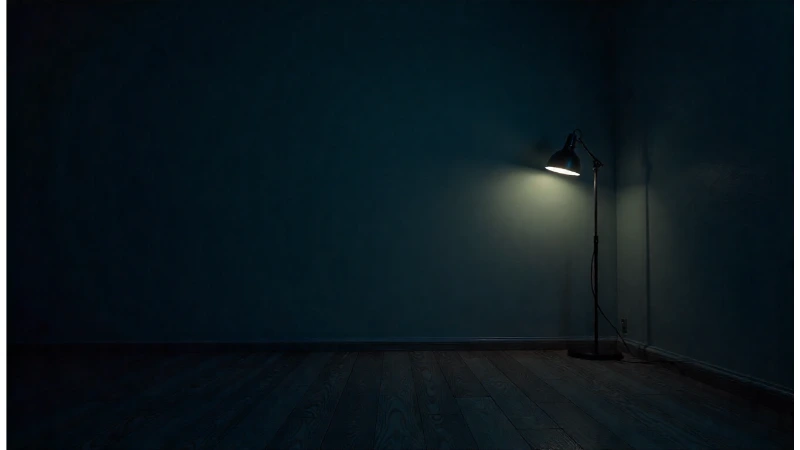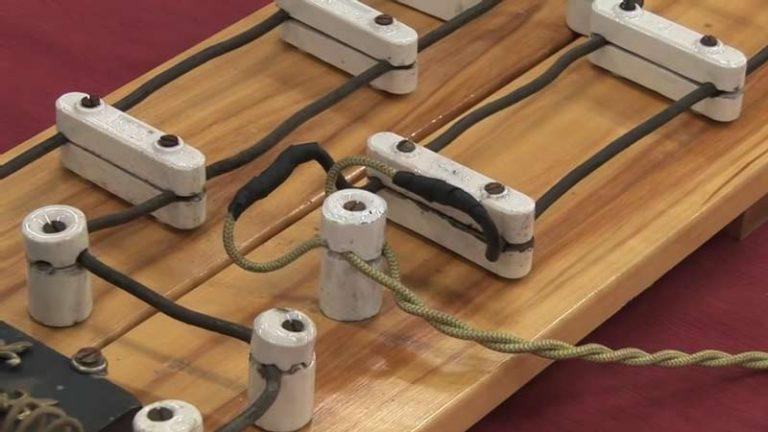Partial Power Outage After Storm: Your House Isn’t Haunted
The storm has passed, the rain has stopped, but an unsettling electrical mystery remains. Some lights flicker, half your outlets are dead, and certain appliances refuse to turn on. It’s a frustrating and confusing scenario known as a partial power outage. This isn’t just an inconvenience; it can be a symptom of a much larger, potentially dangerous electrical problem brewing within your walls or even from the street.
Unlike a complete blackout that plunges everything into darkness, a partial outage is deceptive. You might have power in the kitchen but not the living room, or your lights might dim and flicker ominously. Understanding what causes this strange phenomenon is the first step toward safely restoring full power to your home.
You'll Learn About
What Exactly Is a Partial Power Outage?
A partial power outage occurs when the flow of electricity to your home is disrupted, but not completely cut off. Your home’s electrical system is typically supplied by two separate 120-volt “legs” or phases of power from the utility line. A partial outage often means that one of these legs has been compromised, leaving only half of your circuits energized.
This can manifest in several confusing ways. You might notice that appliances on one circuit work perfectly, while those on another are completely dead. This is because different circuits in your home are wired to different legs of the incoming power.
It’s a common issue that leaves many homeowners scratching their heads, wondering if the problem is inside their house or with the utility company. The answer can be complex, and pinpointing the source is crucial for a safe and effective solution.

Common Culprits Behind a Partial Outage After a Storm
Storms, with their potent combination of wind, rain, and lightning, are a primary cause of partial power outages. The damage can occur at various points, from the utility lines down to your home’s internal wiring. Here are the most frequent causes you might encounter.
Problems Originating from the Utility Company
Often, the problem lies outside your home. Severe weather can wreak havoc on the electrical grid. Damaged power lines, whether from falling tree branches or high winds, are a frequent cause. A lightning strike near a transformer can also disrupt the power flow to your home, sometimes affecting only one of the two electrical legs.
If you suspect the issue is external, a good first step is to check with your neighbors. If they are experiencing similar issues, it’s highly likely a problem with the utility service. In this case, your only course of action is to report the outage to your power company and wait for their crews to make repairs.
Trouble at Your Electrical Panel
Your circuit breaker panel is the heart of your home’s electrical system, and it’s a common source of partial power issues. A tripped main breaker is a frequent culprit. Sometimes, a power surge during a storm can trip one half of the main breaker, leading to a partial outage. Even if the breakers don’t look tripped, it’s worth resetting them fully.
Moisture is another significant threat. Heavy, wind-driven rain can force water into your main electrical panel, especially if it’s located outdoors or has a poor seal. Water and electricity are a dangerous combination that can cause short circuits and trip breakers.
In older homes with fuse boxes, a blown fuse can also be the cause. If a fuse blows on a critical circuit, it will cut power to that specific area of your home.
Internal Wiring and Outlet Issues
The problem can also be within your home’s own wiring. Loose or damaged wiring can lead to intermittent power and flickering lights. These issues are serious safety hazards and should be addressed by a professional immediately. If you’ve ever wondered how to tell if you’ve damaged a wire, flickering lights after a storm can be a major red flag.
A tripped Ground Fault Circuit Interrupter (GFCI) outlet is another common cause. These safety devices, usually found in kitchens, bathrooms, and outdoor areas, can trip during a power surge, cutting power to other outlets on the same circuit.
Your Step-by-Step Action Plan for a Partial Power Outage
When faced with a partial outage, it’s essential to proceed with caution. Electrical issues can be dangerous. Follow these steps to safely troubleshoot the problem and determine your next course of action.
Step 1: Assess the Situation and Prioritize Safety
Your first priority is safety. If you see any signs of electrical damage, such as sparks, smoke, or a burning smell, evacuate the area immediately and call 911 or your local fire department. Do not attempt to touch any electrical panels or wires if you suspect water damage.
If there are no immediate signs of danger, check with your neighbors to see if they are experiencing a similar outage. This will help you determine if the problem is isolated to your home or is a wider grid issue.
Step 2: Check Your Circuit Breaker Panel
Head to your electrical panel. Look for any breakers that are in the “off” or a middle position. To properly reset a breaker, you must first flip it all the way to the “off” position and then firmly back to “on.” Sometimes a breaker can trip internally without the handle moving, so it’s a good practice to reset the main breaker and any affected individual breakers.
While you’re at the panel, look for any signs of moisture or damage. If you see water or evidence of corrosion, do not touch anything and call a licensed electrician immediately.
Step 3: Inspect Your GFCI Outlets
Locate the GFCI outlets in your home. These are the outlets with the “Test” and “Reset” buttons. If one has tripped, the “Reset” button may have popped out. Press it firmly back in. A single tripped GFCI can sometimes knock out power to a whole series of standard outlets downstream on the same circuit.
Step 4: Isolate the Problem
If resetting breakers and GFCIs doesn’t solve the problem, try to identify which appliances or devices are not working. Unplug everything in the affected area. Sometimes, a single malfunctioning appliance can cause a circuit to overload or short out, especially after a power surge from a storm. You may discover your noisy appliance, much like these common refrigerator noise problems, is the source of the electrical issue.
Plug devices back in one by one. If plugging in a specific appliance causes the breaker to trip again, you’ve likely found the culprit.
Step 5: When to Call the Professionals
If you’ve gone through the steps above and still have a partial power outage, it’s time to call for help. Do not attempt to perform any complex electrical repairs yourself.
- Call your utility company first if you suspect the problem is outside your home (e.g., your neighbors have the same issue or you see a downed power line).
- Call a licensed electrician if the problem seems isolated to your house and you’ve ruled out simple tripped breakers or GFCIs. An electrician can safely diagnose issues with your panel, wiring, or service connection.
Understanding the Dangers of a Partial Power Outage
A partial power outage is more than just an inconvenience; it can pose significant risks. An unstable power supply can damage sensitive electronics like computers, TVs, and smart home devices. More seriously, it can indicate underlying problems like faulty wiring or a failing main breaker, which are serious fire hazards.
Flickering lights or outlets that feel warm to the touch are warning signs that should never be ignored. These can indicate a loose connection that is arcing—creating tiny electrical sparks—which can easily ignite surrounding materials.
| Symptom | Potential Cause | Recommended Action |
|---|---|---|
| Half the house has no power | One leg of utility service is out; Tripped main breaker | Check with neighbors, then call utility. Check main breaker. |
| Lights are dimming or flickering | Loose wiring; Overloaded circuit; Utility issue | Unplug devices. If it persists, call an electrician. |
| Outlets in one area (e.g., kitchen) are dead | Tripped circuit breaker; Tripped GFCI outlet | Check breaker panel and reset all GFCI outlets. |
| Burning smell or buzzing from outlets/panel | Serious electrical fault; Overheating wires | Turn off main breaker if safe; Call an electrician immediately. |
| Breaker trips repeatedly | Overloaded circuit; Short circuit; Faulty appliance | Unplug devices on the circuit. Call an electrician if it continues. |
Preventing Future Electrical Issues After Storms
While you can’t control the weather, you can take steps to protect your home’s electrical system from storm-related damage. Proactive maintenance is key to preventing a future partial power outage.
Install Whole-Home Surge Protection
A power surge from a nearby lightning strike can fry your appliances and damage your electrical system. A whole-home surge protector is installed at your electrical panel and helps defend all your circuits from these damaging voltage spikes.
Regular Electrical Inspections
Have a licensed electrician inspect your system every few years, especially if you live in an older home. They can identify and fix potential problems like loose connections, outdated wiring, or a failing electrical panel before they become dangerous. This can also help you identify other potential issues in your home, such as understanding the purpose of a mysterious pipe on your roof, which could be related to your plumbing’s vent stack.
Maintain Your Property
Keep tree branches trimmed away from the power lines leading to your house. This simple step can prevent one of the most common causes of storm-related power outages. Ensure your outdoor electrical panel has a secure, watertight cover to prevent moisture intrusion during heavy rain.
A partial power outage after a storm can be alarming, but by following a logical, safety-first approach, you can effectively troubleshoot the situation. Know the basic checks you can perform yourself, and more importantly, recognize when it’s time to call in the professionals. Protecting your home’s electrical system is crucial for the safety and security of your family.

